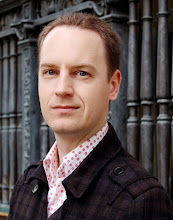
Fantagraphics recently released a handsome hardcover collection dedicated to the fairly new, emerging genre of abstract comics. Edited by Andrei Molotiu, 'Abstract Comics' features examples from an eclectic mix of comics creators including: Robert Crumb, Gary Panter, Patrick McDonnell, Lewis Trondheim, Mark Badger, J.R. Williams and many more.
 Above: 'Abstract Expressionist Ultra Super Modernistic Comics' by R. Crumb. Copyright R. Crumb 2009.
Above: 'Abstract Expressionist Ultra Super Modernistic Comics' by R. Crumb. Copyright R. Crumb 2009.Refreshingly, the collection also represents an international pool of comics talent, with contributors from France, Switzerland, Great Britain, Australia, and here in New Zealand.
Wellington cartoonist Draw has been prolifically self-publishing comics for 10 years, including the series 'Style Crime', 'Clutter', 'Delve' and the anthologies 'Pictozine 2' and more recently 'Bristle'. Last year he began experimenting with abstract comics for his excellent website Drawing Silence.
To find out more about abstract comics, and more importantly, what inspires them, I tracked down Draw for some answers:
AK: How did you become involved in the project?
AK: What inspired you to create abstract comics?
AK: Were there particular visual ideas or effects you were interested in exploring with the comics form?
AK: Panel frames appear to be a recurring theme for exploration in your abstract comics series, with some very arresting results. Comics panels traditionally control both focus (by framing the narrative into sections) and time (length of time it takes to read the panels in sequence), as a result I find their presence adds a great deal of conceptual baggage for you to experiment with. Was the traditional mechanics of the comics panels something you had in mind during the creation of Series #1?
Above: 'Series #1, #7a' of Draw's abstract comics. Copyright Draw 2009.
AK: You've also experimented with having content inside and outside of a panel grid, for example, Series 1 Abstract 8 set 'They are coming'. Did you find one effect more interesting than the other, or was it more about exploring the contrast between to two effects?
Above: 'Series #1, #8c: They are coming', by Draw. Copyright Draw 2009.
DRAW: I had an epiphany. The gutter is where all the action in a comic takes place, its where the reader creates the comic reading experience. The Abstract Seven set from series One is the first experiments I did looking into this. I wasn't trying to create effects, I was trying to create a visual representation of what happens in the gutter of a comic.
DRAW: I had an epiphany. The gutter is where all the action in a comic takes place, its where the reader creates the comic reading experience. The Abstract Seven set from series One is the first experiments I did looking into this. I wasn't trying to create effects, I was trying to create a visual representation of what happens in the gutter of a comic.
Above: 'Series #3: 'Lines', #8', by Draw. Copyright Draw 2009.
DRAW: So for series 3 the question became what kind of abstract comics experience will the reader have if the content is situated within different parts of the comic form, the gutter or the panel. This is why I tried several versions of each work.
Above: 'Silver #2, page 3', by Draw. Copyright Draw 2009.
AK: You've also experimented with photography in the 'Silver series' and in Abstract series 2. Could you talk a little about that choice and does it have any link to the panels from 'Series #1'.
DRAW: Its interesting that you have mentioned silver along with Abstract comics, since when I conceived of it I didn't think of it as a abstract comic, most of the images are representational if a bit fuzzy. I was exploring history, stories, nostalgia, fantasy and reality using found images. Silvers in time.
With Abstract two I was Initially thinking about how and what the gutter in a comic is. The gutter in a comic hides and reveals the story as you read it, you don't see everything in a comic. You have these tiny fragments of the image with much of it obscured. By applying this idea to a found image you create a different experience of the image, it changes. So to start with I covered a found image with paint (the gutter) and then removed the gutter to create the comic panels. From that I moved onto painting the gutter onto found images to create panels.
AK: Having been involved with the Abstract Comics collection and blog and seeing the work of other creators involved, has that provided you with some different perspectives and ideas for areas of abstract comics to explore next?
Hmm...to see what new directions (and forms) Draw's abstract comics will take, be sure to check out his website. There's also the Abstract Comics Blog: a collective featuring new work from the artists featured in the collection.
Abstract Comics, edited by Andrei Molotiu is out now from Fantagraphics.
$39.99US much more in NZ dollars (but worth your cash!) ISBN:978-1-60699-157-2
-AK!
















great ideas, great comics.
ReplyDeleteThey are coming' - very interesting.
Hey Adrian Thanks for the great post and plug!
ReplyDelete